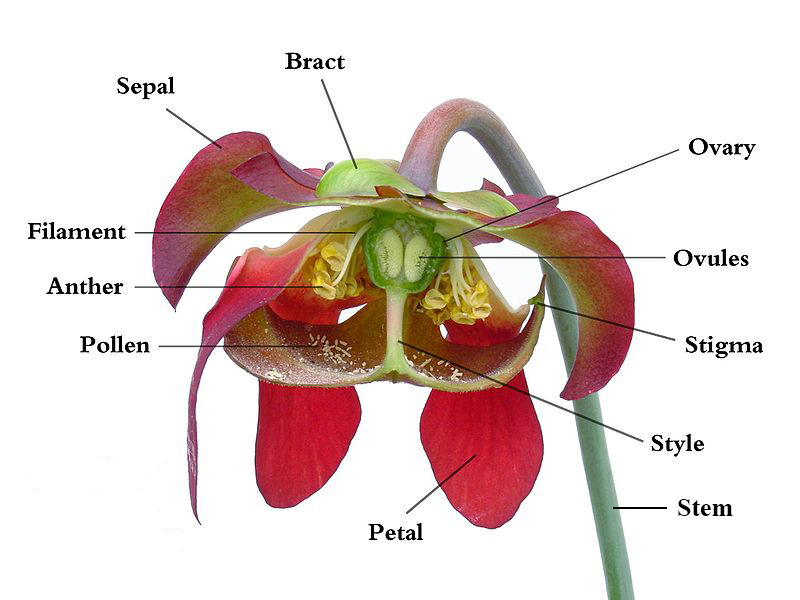In the northern hemisphere, May is a spring month characterized by flowers in full bloom. In the southern hemisphere, May is an autumnal month and many flowering plants die or prepare for a winter's rest. Although many flowers are admired for their beauty, the complex structures that form them also deserve appreciation. So, what are flowers made of? Here is a list of the main components:
- Anther: Pollen-producing structure; part of a flower's stamen.
- Bract: Specialized leaf at the base of a flower.
- Filament: Stalk that supports the anther; part of a flower's stamen.
- Ovary: Structure where fertilization takes place and seeds are made; part of a flower's pistil.
- Ovules: Seed-producing structures; part of a flower's pistil.
- Petal: Colorful parts of a flower that attract pollinators.
- Pistil: Female organ of a flower that produces seeds after pollination; comprised of the ovary, ovules, style, and stigma.
- Pollen: Powdery grains created by a plant's male organ; able to fertilize the female ovules.
- Sepal: Encloses the bud while it is developing and protects the petals when the flower opens; often green and leaf-like.
- Stamen: Male organ of a flower that produces pollen; comprised of the filament and anther.
- Stem: Supports the flower and transports water and nutrients from the roots.
- Stigma: Pollen receptor; part of a flower's pistil.
- Style: Pollen-transporting structure; part of a flower's pistil.
Image: Cutaway view of a Sarracenia flower with anatomical parts labeled (Image credit: Noah Elhardt; released to the public domain via Wikimedia Commons.
This article originally appeared in the May 2015 issue of Observations: A Pier Press® Newsletter. If you're not already a subscriber, click here to sign up. It's Free!

